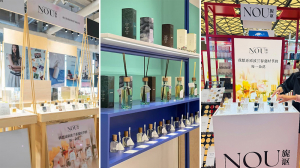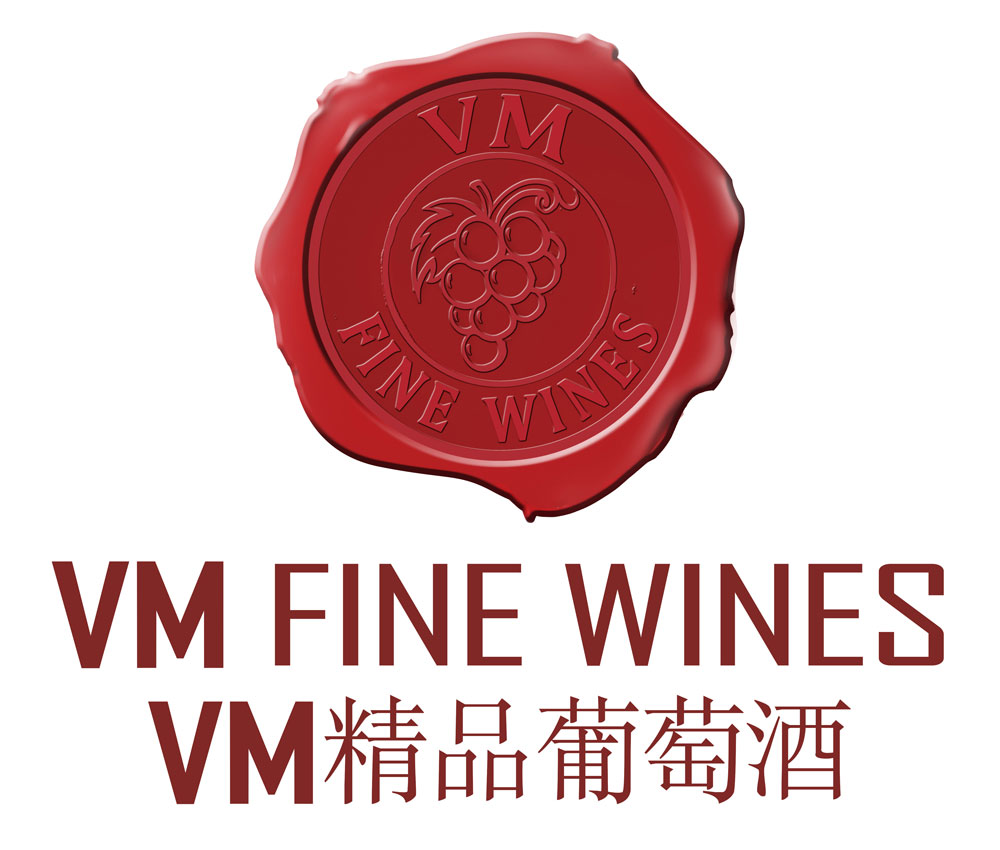



Mr Semprini, a professional sommelier trained in Italy and London and based in Shanghai since 2013, is the Shanghai Area Manager of VM Fine Wines. VM Fine Wines was founded in 2010; it stands for Vinicio, an Italian entrepreneur who has been doing business in China since 1994, and Martin, a Chinese businessman with a passion for Italian wine and food. The company directly imports and sells Italian wine in the Chinese market; it is also active in other product categories such as coffee. VM Fine Wines is the exclusive importer and distributor in China of around 250 different labels from 30 wineries from all over Italy. It has a number of warehouses and offices across China in order to guarantee a quick delivery of products and optimise its services to Chinese consumers.
For more information on VM Fine Wines, visit its official website.
Overall, the Chinese market for wine has been slowing down in recent years, but the trend has become more evident particularly since 2023, in line with the broader economic situation of the country after the end of pandemic-related restrictions. Consumers tend to be more cautious about where and how they spend their money. Still, wine largely remains a “status symbol” product in China; it is not a luxury product, but still not a primary necessity.
The mainstream Chinese wine consumers are business professionals, aged between 25 and 40 (or younger), often single, with a good social life and strong purchasing power. There is a growing number of women approaching the wine market. Their palate is softer, they prefer wines with a strong alcoholic structure but a sweeter taste, thus with softened tannins. Regardless of the target, however, we have to keep in mind that while in Italy, and in general in Europe, we often are very meticulous about pairing wine with food, this is not the case in China: wine is often drunk alone, as a standalone beverage.
Although the general knowledge of wine is overall lower than in other markets and Chinese wine consumers cannot yet be described as sophisticated consumers, the situation is improving. When Mr Semprini arrived to Shanghai in 2013, he recalls finding no more than a dozen wine bars in the entire city; now the city is teeming with wine bars and bistros. There are even coffee shops that serve coffee during the morning and afternoon, and turn into wine spots for aperitif and dinner. Education on wine is also becoming more popular: a growing number of schools and institutions offer degrees or training courses on wine; several world-class Chinese sommeliers enjoy a wide recognition. Therefore, overall, Chinese wine consumers are becoming more and more educated about wine.
Domestic production of wine has grown significantly in recent years, thanks to sustained investment from various industry players – including foreign-invested ones, large (Rothschild, Moët Hennessy, etc.) and medium/small alike. We are starting to see a highly defined mapping of Chinese wine regions and wineries: among these, it is interesting to see that many are focusing their efforts on natural, biological and organic wines. This is a real trend, according to Mr Semprini. Usually, overseas, this would be a later step of wine production; while Chinese local producers are getting there ahead of other steps. One of the reasons could be that such types of wine suit better the taste preferences of local consumers, who are not yet highly sophisticated and experienced wine consumers, and therefore more readily select wines for these characteristics.
Another peculiarity of the Chinese market, which makes it very different – and challenging – for many wineries, is that competition is mostly based on marketing, promotion and branding, rather than product quality. Although in general the overall knowledge of wine among Chinese consumers is lower than in other countries, they are very aware of brands: often, they would not ask you for wine from Tuscany or Veneto regions; rather, they will ask directly for a Sassicaia or Amarone. The brand of a wine is extremely important. Therefore, brand building and visibility should be highly prioritised in China, regardless of the channel – though online channels and platforms offer the highest potential.
Tip: If a winery is already strong in other foreign markets, then it should fully leverage on this aspect during their promotion efforts in China. Awards are also extremely important to Chinese consumers and should be actively sought.
Italy has an excellent quality/price value and certainly has the richest variety of grapes in the world. It has an immense potential; but this has not yet been fully tapped, partly as Italian wineries arrived later in the Chinese market compared to other competitors. Another opportunity perhaps was lost in 2021 when Australia was literally shut out of the Chinese market through retaliatory measures: Italy’s market share increased slightly, but not as fast as that of other competitors.
In any case, according to Mr Semprini’s experience, there are a few elements that should be actively highlighted during promotional activities in China. Taking Italian wine as example, these elements relate to the complexity, diversity and beauty of the Italian territory, the history, tradition and DNA of wineries, as well as the constant search for excellency and quality particularly notable since the 1970s and 1980s. DNA refers to the linkage between the winery and the territory, its history and traditions, each creating different shades even if coming from the same grape variety. DNA reflects the fact that a Sangiovese wine from Tuscany is different from a Sangiovese wine from Umbria; or that Chianti comprises different types of wine across various subzones in the Chianti region of Tuscany. Chinese consumers respond well to such messages, but of course it takes a lot of time and sustained efforts before you are able to see concrete returns.

A typical format used by Mr Semprini to promote wines in China is to organise wine dinners with Chinese professionals and consumers, featuring wines from a single winery or multiple wineries, e.g. from a single region or from all over the country. Perhaps in order to be really successful in China you need to be a storyteller and communicate the message in an impressive and effective way, but always refrain from exaggerations and unproven claims. The relationship with your Chinese client must be grounded in trust, which can be built only through professionality, honesty and personal relations. Once trust is gained, it needs to be constantly cultivated and maintained.
The concept of Geographical Indication is extremely important. Is is also highly complex.
According to Mr Semprini, Chinese consumers’ overall awareness of geographical indication is not as strong as other countries, and thus it may not always add value to leverage on it during promotional activities. This has been one of the main obstacles faced by Italian wines in China. It is not uncommon to find Italian wines with DOCG denomination (i.e., the highest tier in the current system) actually priced lower than IGT (i.e., the lowest tier of denomination). This rarely happens in other countries, where Grand Crus are always more expensive than lower-tier denominations. This sometimes confuses Chinese consumers and makes it harder for them to fully grasp the quality of the wine.
Mr Semprini’s approach is to stay as simple as possible. First, aim at building awareness on the broader concept of protected designation of origin (DOP); only after that should you aim at further refining such knowledge into more detailed tiers of designation (such as DOC and DOCG in Italy), the certification process and criteria, etc.
For small wineries not already present in the country, the Chinese market can be extremely challenging to enter, especially when compared to other traditional wine markets such as European countries, but also the United States, the United Kingdom or even Japan. Mr Semprini’s advice is to try to team up with other wineries in the same situation, not a competitor but complementing the wine offering, visiting retail channels, meeting potential importers, and participating to trade fairs together. In this way, costs are shared and your negotiation leverage is increased. Ideally, wineries should try to join promotional activities of wine consortia or associations in China. For instance, at the recent Global Geographical Indication Products Expo held in Luzhou, Sichuan, Consorzio dell’Asti was present with its own stand and a number of wineries to promote Asti DOCG, i.e. Asti Spumante and Moscato d’Asti. Traditionally, Italian wineries have not sought this approach and preferred to go individually, in contrast e.g. to French chateaus which now dominate the Chinese market. Alternatively, there are professional intermediaries and brokers who offer such services by gathering a number of wineries from one region and introduce them into the Chinese market.
Without local resources operating on the ground in China, participating to trade fairs in China is the most effective approach to meet potential importers. However, while there are many fairs for wine in China, not all of them may be relevant. Some may have a predominant presence of individual consumers who purchase wine on the spot: this might also lead to revenue, but once the fair ends, no impact is left. By contrast, other fairs may feature fewer visitors but who are predominantly from the industry and thus more relevant for a winery’s China market strategy. For Italian wineries, Vinitaly in recent years has grown steadily; Gambero Rosso is also expanding its influence in the country. Traditional fairs such as Interwine are also relevant for small wineries. In any case, it is important to be present on the ground, not only at the initial stage but also once the product lands in the market.
Find more information and practical advice to export wine from Europe to China in our recently published report China’s Wine Market(s): Drivers, Technical Requirements, and Opportunities for EU Producers.